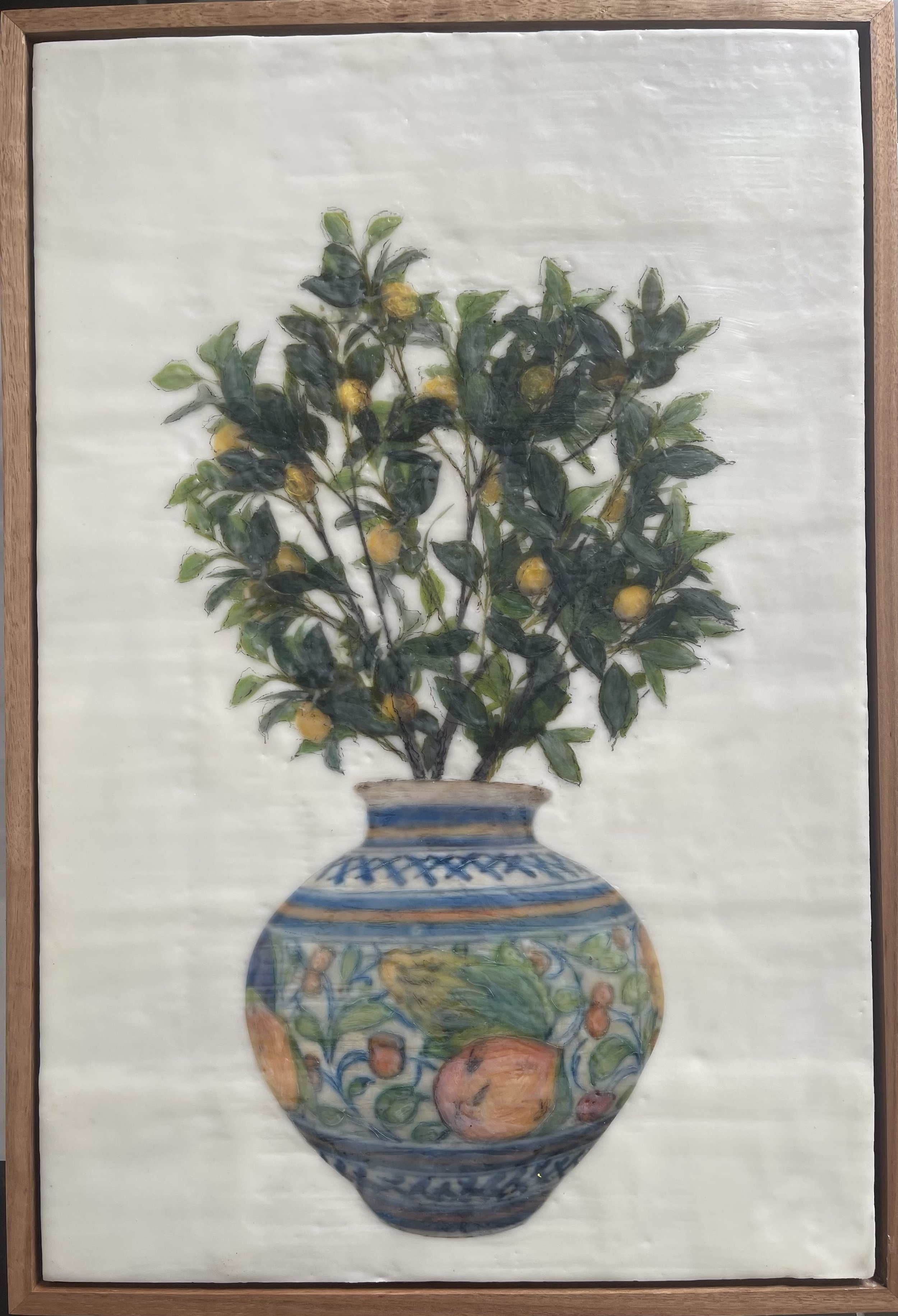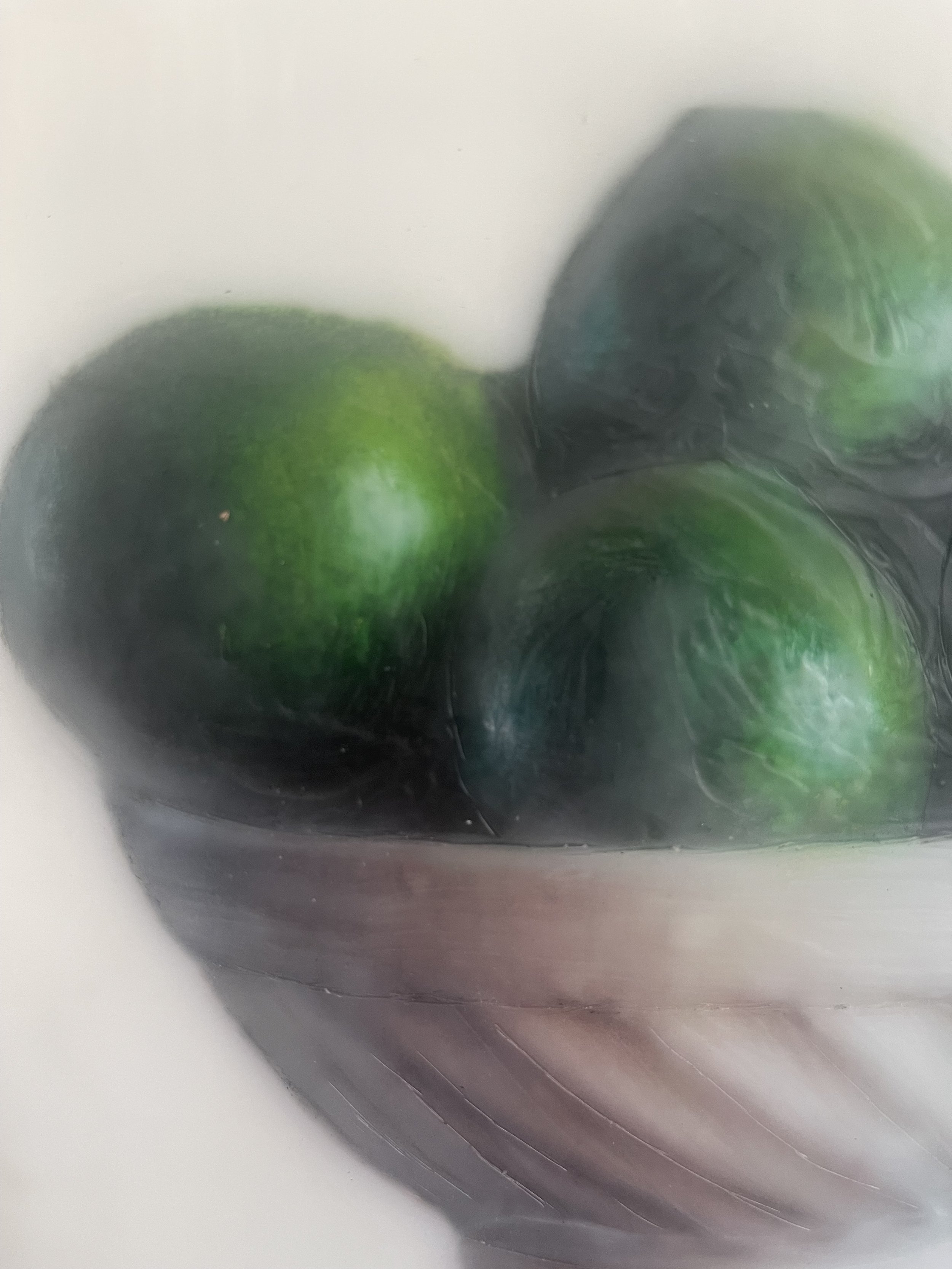




Mediterranean Lemons
"Mediterranean Lemons" is a mixed media and encaustic wax artwork that captures the essence of a trip to Italy, focusing on The Isle of Capri. The piece features intricate lemon branches adorned with vibrant yellow lemons delicately arranged in a beautifully hand-painted vase originating from Capri. Measuring at 44 x 63cm, this artwork is elegantly framed in a timber floating frame. The combination of mixed media techniques and the rich encaustic wax medium beautifully brings to life the Mediterranean vibes and the essence of sunny Italy, making it a captivating piece that exudes charm and warmth.
Encaustic painting is an ancient art form and can be traced back to the 5th century BC. Encaustic wax is a combination of beeswax and an additive to strengthen and raise the melting temperature. Typically damar resin is used though other additives are sometimes used. Layers of molten wax are applied to wooden structures/panels. It has beautiful luminous qualities which can be coloured. The wax can be embedded, collaged, scraped, textured and polished to a high sheen. Encaustic wax is a natural adhesive and preservative, it is moisture resistant, mildew and fungus resistant and unappetising to insects. Wax paint doesn’t contain solvents or oils so will not darken or yellow with age, it is 100% archival.
Care for Encaustic Wax
Encaustic paint is the most durable form of painting, evidenced by the Faiyum mummy portraits in Egypt. They have survived over 2000 years without cracking, flaking or fading.
Do not hang fine art in direct sunlight, encaustic wax in particular should always feel cool to touch. Encaustic wax is stable from 4 - 49 degrees C. Use a soft lint free cloth to gently buff if it becomes dull looking, this happens during curing time (around 6 months) It should always look shiny. After that time it will retain it’s polished look. At this point it will repel dirt and dust more readily.
Properly looked after your Encaustic wax painting will last many life times.
Mediterranean Lemons
"Mediterranean Lemons" is a mixed media and encaustic wax artwork that captures the essence of a trip to Italy, focusing on The Isle of Capri. The piece features intricate lemon branches adorned with vibrant yellow lemons delicately arranged in a beautifully hand-painted vase originating from Capri. Measuring at 44 x 63cm, this artwork is elegantly framed in a timber floating frame. The combination of mixed media techniques and the rich encaustic wax medium beautifully brings to life the Mediterranean vibes and the essence of sunny Italy, making it a captivating piece that exudes charm and warmth.
Encaustic painting is an ancient art form and can be traced back to the 5th century BC. Encaustic wax is a combination of beeswax and an additive to strengthen and raise the melting temperature. Typically damar resin is used though other additives are sometimes used. Layers of molten wax are applied to wooden structures/panels. It has beautiful luminous qualities which can be coloured. The wax can be embedded, collaged, scraped, textured and polished to a high sheen. Encaustic wax is a natural adhesive and preservative, it is moisture resistant, mildew and fungus resistant and unappetising to insects. Wax paint doesn’t contain solvents or oils so will not darken or yellow with age, it is 100% archival.
Care for Encaustic Wax
Encaustic paint is the most durable form of painting, evidenced by the Faiyum mummy portraits in Egypt. They have survived over 2000 years without cracking, flaking or fading.
Do not hang fine art in direct sunlight, encaustic wax in particular should always feel cool to touch. Encaustic wax is stable from 4 - 49 degrees C. Use a soft lint free cloth to gently buff if it becomes dull looking, this happens during curing time (around 6 months) It should always look shiny. After that time it will retain it’s polished look. At this point it will repel dirt and dust more readily.
Properly looked after your Encaustic wax painting will last many life times.




















